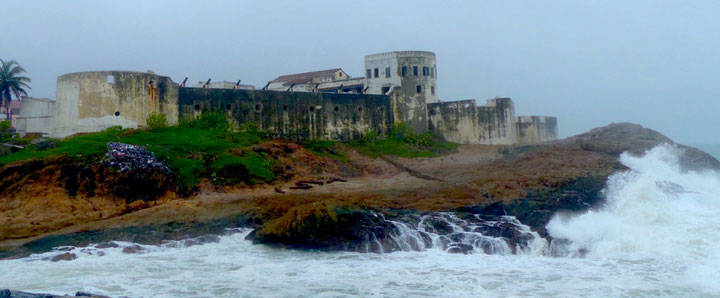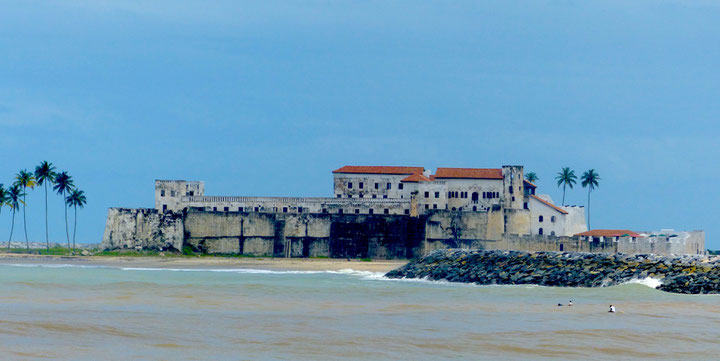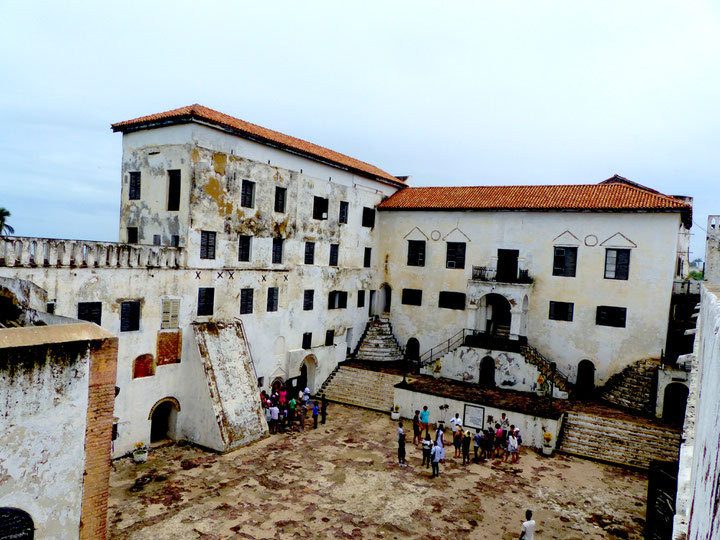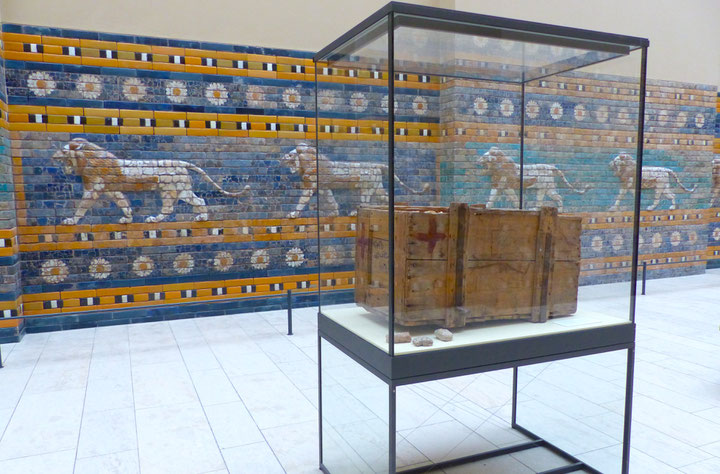It is no exaggeration to think that human life and existence is inherently inter- and transgenerational, transcending spatial boundaries, and rooted in relationships of care and dialogues that defy the prevailing racialised and militarised geography and individualistic paradigm of the imperial-neoliberal order. Autobiography, in this context, cannot serve as a mere validation of a singular self or life.1 If we acknowledge that imperial violence has played a significant role in shaping our world, then I might posit that, like peoples across the globe, my memories and, consequently, my life have been etched by a succession of imperialistic violence.
As a social scientist specialising in the violence and memories of political modernity, I have embarked on a scholarly commitment of connecting and working with others and transcending the confines of self. My research, as a pursuit of human learning and knowledge, is tangled with hospitality,2 making me both an endless host and an unequivocal captive of the recollections of political violence, spanning Western Europe, Rwanda, South Africa, Iraq, and Iran. In this pursuit of love of leaning, I have also become entwined with the legacies of colonial violence in the Kingdom of Benin and the Asante Kingdom in parts of the world that are now recognized as Nigeria and Ghana.
On the Ghanaian coastline, one can observe the remnants of imperial forts or the ruins of the trans-Atlantic human trade, which formed the foundation for what we now remember as Western Europe. The Portuguese empire built Elmina Castle, Fort St. Sebastian, Cape Coast Castle, and Fort Saint Anthony between 1482 and 1555; the Dutch erected Fort Nassau, Ussher Fort, Fort of Good Hope, Fort Orange, Fort Batenstein, Fort Vredenburgh, and Fort Patience from 1612 to 1697; the British owned Fort Amsterdam, James Fort, Fort Metal Cross, Fort Apollonia, Fort Vernon, and Fort William between 1638 and 1753; Danish-Norwegian collaboration resulted in Osu or Christiansborg Castle and Fort Fredensborg during 1660 to 1734. The Danish oversaw Fort Kongenstein, Fort Prinzenstein, and Frederiksgave plantation from 1683 into the 1830s. Lastly, the Brandenburg-Prussian empire established Fort Gross Friedrichsburg from 1681 to 1683. Many of these imperial buildings were built on the ruins of previous ones, and conflicts among the empires led to changing ownership and names over time. Some are in good conditions and have been designated as UNESCO World Heritage Sites, attracting tourists from parts of the world.3
In this context, I find myself both a host to these memories of imperial colonialism and a hostage to the haunting narratives of pasts that cannot be disentangled from the unknown futures. Our autobiographies do not only tangle with others both familiar and foreigner, including those who are yet to be born, but also point us to the infinite responsibilities towards an Earth in ruins.
Throughout history, from the age-old Mesopotamian empires to the empires of the twentieth century, we encounter a consistent political program of the destruction of established life forms or ways of learning, living, and being or the plunder of the incalculable tapestry of heterogenous cultures within their crosshairs. The conquest of land, destruction of human ecology, that is, the target people and knowledge or the subjugation of entire cultures and histories, often manifesting in what I understand as ‘catastrophic art’4 (more on this further below), have been recurring programs employed by imperial powers long before the emergence of more recent empires like the Arab-Islamic, Crusades, Portuguese, Spanish, Ottoman, French, British, Prussian, Dutch, Belgian, or United States. A noteworthy historical illustration is the Assyrian empire’s destruction of Elamite Susa, or Shush, a city situated in what is now the central west region of present-day Iran, an event that unfolded in the 7th century before our time. Similarly, the Roman Empire’s Delenda est Carthago5 (Carthage Must be Destroyed), and the subsequent destruction of Carthage situated in contemporary Tunisia, transpired in 149 BC.
Speaking of the destruction of the Elamite Susa, the Assyrian Emperor Ashurbanipal says the following in the 7th century before common era: ‘Susa, the great holy city, abode of their Gods, seat of their mysteries, I conquered. I entered its palaces, I opened their treasuries where silver and gold, good and wealth were amassed … I destroyed the ziggurat of Susa. I smashed its shining copper horns. I reduced the temples of Elam to naught; their gods and goddesses I scattered to the winds. The tombs of their ancient and recent kings I devasted, I exposed to the sun, and I carried away their bones toward the land of Ashur. I devastated the provinces of Elam and on their lands I sowed salt’.6
The spectre of imperial violence in the region predated Ashurbanipal’s ascension to power, and it did not recede during or after his rule. The pivotal Assyrian subjugation of Egypt in 671 BCE, marked by the pillaging of Memphis under the dominion of king Esarhaddon, heralded the expansion of an empire that asserted its dominion from the southern territories of Babylonia to the western realms of Phoenicia and Egypt.7
These instances stress the age-old life of imperial powers systematically destroying civilisations only to solidify their dominion.
During the early 19th century, imperial powers aggressively seized hold of the heritages and ruins of Mesopotamian empires like Assyria, Babylon, and Akkadia, as well as the African and Mesoamerican civilisations. This act of plunder involved clinical digging up, categorising, and then transporting these ‘antiquated’ empires to be reassembled in the heart of burgeoning empires, which we now remember as Western Europe.
The intricately embossed Nebuchadnezzar tiles, the resplendent tiles adorning the Babylonian Ishtar Gate, those gracing the regal Palace, and the grandeur of the Processional Way – all amassed in great number, stacked into a multitude of wooden crates destined to undertake an extraordinary transcontinental voyage, traversing the Euphrates from Babylon, spanning three continents, ultimately arriving in Berlin, the metropole of the Prussian Empire during the early 20th century. The ghostly blue and yellow Ishtar Gate, accompanied by the grandeur of the Processional Way, was destined to serve as a profound emblem of triumphant dominion, ushering forth the establishment and preservation of the Prussian Empire.
In the waning years of the 19th century, the British, French, and German empires extended their relentless campaign aimed at the destruction and cultural plunder across the world, including the Kingdom of Benin, the Asante Kingdom, the Kingdom of Dahomey, and what is today the Republic of Cameroon. The imperial onslaughts targeted the heterogenous cultural lives of these kingdoms in the continent of Africa and the world at large. Like those of ‘ancient’ empires, these too were gathered and shipped to the metropoles of London, Paris, and Berlin.
Cultural Plundering
The trajectory of imperial violence finds continuity through the twentieth and twenty-first century. In addition to the ways heritage sites are being turned into neoliberal destinations for profit, endangering the preservation of heterogenous cultures and histories, there is also the looming threat of nuclear annihilation hanging over our planet. It is essential to recognise that modern states, especially those with imperial ambitions and nuclear bombs, still hold a monopoly on violence, war, and destruction. This means they have the power to wage war and cause devastation on a global scale. As I write, political violence is ongoing in many parts of the planet, including Palestine, Ukraine, Sudan, Burkina Faso, Chad, Mali, Niger, Yemen, Libya, Nagorno-Karabakh, Syria, Iraq, Iran, as well as against Indigenous peoples in the Americas, Scandinavia, and Australia. The Rohingya people in Asia, the Kurds in Syria, Iran and Türkiye, and countless stateless migrants are all caught in the crossfire, desperately seeking hospitality. To ask, what happens to those who become one with the vast expanse of the Atlantic while seeking hospitality, is to inquire into the living on of imperial colonialism.
In her book In the Wake, Christina Sharpe engages in a profound exploration of the haunting memories of the peoples from the continent of Africa who were forcibly cast into the unfathomable depths of the Atlantic Ocean during the ‘transatlantic human trade’. Sharpe’s committed analysis show that, ‘Human blood is salty, and sodium has a residence time of 260 million years’.8 In this context, the Atlantic Ocean becomes a silent witness to the imperial colonial violence or acts of destruction and annihilation. As such, it is inextricably entangled with the erstwhile imperial museums in London, Berlin, Brussels and Paris. These museums and infinite number of others house and display colonial violence under the label ‘collections’ or ‘objects’. These ‘collections or objects’ from the African continent were named ‘primitive art’ from the 19th to late 20th centuries and include macabre relics like human skulls and remains, as well as cultural, political, and religious artifacts or artworks extracted from the African kingdoms mentioned earlier and various regions across the African continent. In fact, the bas-relief portraying the Assyrian imperial destruction of the Elamite Susa as well as the Assyrian imperial library can be currently viewed at the British Museum in London; the king Esarhaddon’s Victory Stele, commemorating his triumphal conquest of Egypt as mentioned earlier, is also prominently situated at the threshold of the Babylonian Processional Way within the confines of the Pergamon Museum in Berlin; the Stele on which the Babylonian King Hammurabi’s Laws inscribed in Louvre in Paris; and the Nefertiti Bust is in the New Museum in Berlin. The 19th century imperial plunder continues to cast its spectral shadow over nation-states such as Germany, France, Britain, the United States, the Netherlands, Belgium, and beyond.
In the era of infinite neoliberal quest for profit and ecological destruction, imperial museums like the Louvre in Paris, the British Museum in London, and the Pergamon Museum, among others such as the New Museum, and the Humboldt Forum in Berlin, do not exist as lonely islands. They have certainly evolved into what can be imagined as small colonies, heavily protected by imperial state bureaucracy, bureaucrats as Kafkian gatekeepers, unprecedented technologies of surveillance, security agencies, and radical capitalist calculations. This entanglement does not point us to a historic transformation that would give place to certain justice, but rather their unbroken colonial thinking, policies, practices, and connections to historical imperialistic foundations that, as mentioned earlier, have prevailed throughout the ages.
Imperial museums continue to assert historical and legal ownership of imperial plunder of cultural heritages, artifacts, artworks as system of knowledge that were shipped to imperial metropoles during the 19th and early 20th centuries. This historical plunder and continued acts of museographic appropriation9 and display as ‘property’ or ‘objects’, is what I understand as constituting catastrophic art. It engages with how colonialism turned plundered works of art into vessels of both precolonial knowledge systems and survivors of imperial knowledge destruction – epistemicide. These acts of destruction would continue to unfold as these artworks are forcibly taken to the heart of empire, metropoles, sold at auctions, end up in private collections, and are categorized, classified, and displayed by ethnologists, curators, and museums. These museums used to be called ‘ethnological’ or ‘ethnographic’, but they have rebranded themselves as ‘world’ or ‘universal’ museums. This change of name is not only to circumnavigate the historical pursuit of restitution, but also to both deny their own imperial colonial histories and the imperial destruction of knowledge, which they continue to lay legal claim to and put on display as ‘objects’ or ‘items’.
Catastrophic art shows that imperial plunder and the politics of restitution cannot be fully understood without closely examining the imperial commitment to destruction of political and economic order, knowledge systems, peoples and life forms. In Catastrophic Art, my analysis of these acts of imperial destruction underscores their historical roots in the 15th century, and shows how the current politics of the restitution of imperial plunder exposes the durability and persistent rhetoric of former imperial states.
President Emmanuel Macron of France delivered a speech at the University of Ouagadougou in Burkina Faso on November 28, 2017, and it has since influenced the approach to returning cultural ‘artifacts’ or ‘objects’ in the 21st century, particularly in France and Germany. In his speech, Macron declared one of his top priorities as president: enabling African heritage to move between France and Africa while creating conditions for the temporary or permanent return of African heritage to Africa.
In 2018, the presidential report on restitution, commissioned by Macron, was published. This report, originally in French but later translated into English, was circulated in specific circles. Both the speech and the report, which I examine in Catastrophic Art, reflect an imperial dream that aims for ‘future’ cooperation between France and Africa while making distinctions between ‘sub-Saharan’ and non-sub-Saharan Africa. The speech and the report also transform French colonial histories into a matter of heritage laws in France, museums, curatorship, and bureaucracy.
In December 2022, the German Foreign Minister, Annalena Baerbock, delivered a speech in Abuja, Nigeria, accompanied by a large delegation, including the Minister of State for Culture, Claudia Roth, and Katja Keul, the Minister of State for Africa. The delegation also included the president of the Prussian Cultural Heritage Foundation, museum directors, and twenty Benin bronzes from various museums in Germany. This, the Foreign Minister summarised as ‘we are here to right a wrong’. The foreign minister’s speech reads: ‘We are glad to be funding the construction of an art pavilion in Edo State, inviting you [Nigerians] to use it to display the bronzes there: We [the German and Nigerian state] also agreed that some bronzes will go on global travelling exhibitions, and some of them will remain as loans in German museums – so that they can tell your stories, your history. What’s crucial is: You’ll know where they are. You know that they belong to Nigeria. And you know that they can come home’.
Among the twenty Benin bronzes, there was a ‘key’: ‘This key is a symbol. This key can help us unlock another chapter in the friendship between our people. That is why we are here today – to push the door of the future of our friendship wide open’, reads the speech.
These examples highlight how the histories of multiple colonial violence remain with us in current political translation of catastrophic art. The French president and the German foreign minister are interested in separate imperial dreams that are dressed in the rhetoric of ‘future’ and ‘friendship’ that are turned into technologies of destroying all possibilities of opening up to colonial histories and responsibilities, coupled with ethical responsibility. These imperial dreams rest on what Stuart Hall calls imaginative identification10 that is founded on difference which is then turned into an invitation to power – the power to know, to conquer, to annihilate, to dispossess, to own and dominate, and to naturalise the nineteenth century imperialism and ‘white supremacy’ as the order of things. This is where restitution as an invitation to power is an imperial promise that whenever there is a sign of the haunting of colonialism, they will come to assert knowledge and domination. Within this imperial promise, there is no room for historical and ethical responsibilities or critical imagination or love.
In The Book of Embraces, Eduardo Galeano writes:
‘There was an old and solitary man who spent most of his time in bed. There were rumours that he had a treasure hidden in his house. One day some thieves broke in, they searched everywhere and found a chest in the cellar. They went off with it and when they opened it they found that it was filled with letters. They were the love letters the old man had received all over the course of his long life. The thieves were going to burn the letters, but they talked it over and finally decided to return them. One by one. One a week. Since then, every Monday at noon, the old man would be waiting for the postman to appear. As soon as he saw him, the old man would start running and the postman, who knew all about it, held the letter in his hand. And even St. Peter could hear the beating of that heart, created with joy at receiving a message from a woman’.11
Since empires are inherently annihilatory and lack regard for ethics or love, the radical contrast between the thieves in The Book of Embraces and the imperial destruction of knowledges and peoples, plunder and theft, is difficult to deny. The current rhetoric of restitution refuses to mark a profound turning point in the historical, political, museographic and ethical relations to catastrophic art that continues to be treated, labelled and displayed as lifeless ‘objects’ in museums across the world at large and deeply piercing our autobiographies. As love letters, restitution is yet to come.
[1] Fazil Moradi, In Search of Decolonised Political Futures, in: Anthropological Theory, Vol. 23 (4) (2023), pp. 355–372.
[2] Fazil Moradi, Being Human: Political Modernity and Hospitality in Kurdistan-Iraq. Newark, NJ: Rutgers University Press, 2024.
[3] See A. W. Lawrence, Trade Castles and Forts of West Africa. London: Jonathan Cape, 1963; Albert van Dantzig, Forts and Castles of Ghana. Accra: Sedco Publishing, 1980; John Kwadwo Osei-Tutu, Victoria Ellen Smith (eds.), Shadows of Empire: New Perspectives on European Fortifications in West Africa. NewYork: Palgrave Macmillan, 2018; Christopher R. DeCorse, An Archaeology of Elmina: Africans and Europeans on the Gold Coast, 1400–1900. Washington: Smithsonian Institution Press., 2001; Joseph K. Adjaye, Elmina, ‘The Little of Europe’: European Impacts and Cultural Resilience. Accra: Sub-Saharan Publishers, 2018; Toby Green, A Fistful of Shells: West Africa from the Rise of the Slave Trade to the Age of Revolution. London: Penguin Books, 2020.
[4] Fazil Moradi, Catastrophic Art, in: Public Culture 34.2 (97) (2022), pp. 243–264. See also, Fazil Moradi, ‘Restitution’ of Looted African Art just Continues Colonial Policies – Much More is At Stake, in: The Conversation, October 13, 2022.
[5 Ben Kiernan, The First Genocide: Carthage, 146 BC, in: Diogenes 203 (2004), pp. 27–39.
[6] Paul Kriwaczek, Babylon: Mesopotamia and the Birth of Civilization. New York: St. Martin’s Press, 2010.
[7] See Eckart Frahm, Assyria: The Rise and Fall of the World’s First Empire. New York: Basic Books, 2023.
[8] Christina Sharpe, In the Wake: On Blackness and Being. Durham: Duke University Press, 2016, p. 41.
[9] This will have to include the appropriation of Nazi plundered art. See Elizabeth Campbell, Claiming National Heritage: State Appropriation of Nazi Art Plunder in Postwar Western Europe, in: Journal of Contemporary History 55.4 (2020), pp. 1–30.
[10] Stuart Hall, Random Thoughts Provoked by the Conference: ‘Identities, Democracy, Culture and Communication in Southern Africa,’ in: Critical Arts: A Journal of Cultural Studies 11.1–2 (1997), pp. 1–16.
[11] Eduardo Galeano, Happenings/2, in: The Book of Embraces. New York: W. W. Norton.
Fazil Moradi is visiting associate professor at Faculty of Humanities, Johannesburg Institute for Advanced Study, University of Johannesburg (JIAS-US); associate researcher at the Institute for Social Anthropology, Austrian Academy of Sciences; and affiliated scholar at the Center for the Study of the Holocaust, Genocide, and Crimes against Humanity at the Ralph Bunche Institute for International Studies, Graduate Center CUNY. He has engaged in collaborative research with medical scientists from the University of Gothenburg, studying the long-term effects of modernity’s technologies of destruction, chemical warfare agents, and convenes the Actuvirtual Symposium at JIAS. Moradi is the editor of Memory and Genocide: On What Remains and the Possibility of Representation (co-ed. by M. Six-Hohenbalken and R. Buchenhorst, Routledge 2017); author of Being Human: Political Modernity and Hospitality in Kurdistan-Iraq (Rutgers University Press, January 2024) and editor of In Search of Political Futures (Special Issue of Anthropological Theory, 2023). His scholarly contributions also appear in Public Culture (2022); Critical Arts (2021); British Medical Journal (2020); Critical Studies (2019); Journal of Higher Education in Africa (2010).






